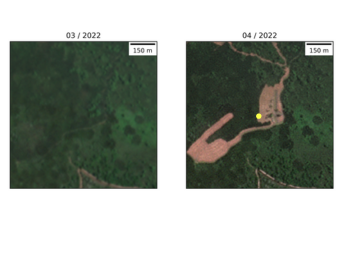Global Mangrove Watch: Radar Alerts for Mangrove Monitoring (RAMM)
Client:
European Space Agency
Location:
Guinea Bissau and Indonesia
Dates:
March 2024 – June 2025
Background:
Mangroves protect coastlines from storm surges, erosion, and sea-level rise, provide habitat supporting rich biodiversity, capture and store large amounts of carbon, and contribute to local community livelihoods. These important ecosystems are under threat due to climate change and developments such as aquaculture, plantations, or over exploitation for wood.
Global Mangrove Watch (GMW) is an online platform that provides the remote sensing data and tools for monitoring mangroves. GMW provides mangrove forest change alerts to support mangrove protection, conservation, restoration, and management. The monitoring of mangroves is based on Sentinel-2 optical images and covers about half of the world’s mangroves, but the timeliness of alerts is affected by cloud cover.
The objective of the RAMM project was to develop a system using Sentinel-1 radar images to provide complementary monthly mangrove forest change alerts.
Services Provided:
Hatfield collaborated with Aberystwyth University and Wetlands International to implement the RAMM Project. The key technical activities were:
- Benchmark candidate algorithms for monthly mangrove change detection using Sentinel-1 time series data. This included single pixel time series deep learning (1D-CNN), spatial deep learning (2D-CNN), lightweight decision tree, and a probabilistic change detection method.
- Implement the best performing algorithm in the Creodias cloud platform using open, cloud-native standards to enable scalability of the RAMM system to global alerts.
- Validate the performance of the RAMM system using a GMW validation dataset and evaluate the impact with end-users.
- Develop a roadmap for operating RAMM across priority mangrove ecosystems globally.
We implemented a two-stage mangrove change detection algorithm, combining a lightweight decision tree method and a 1D-CNN deep learning method. The RAMM system can be scheduled or triggered by the user to automatically process the workflow. A simple web portal was established for launching and managing jobs.
The RAMM mangrove change detection system achieved a low commission error (false positives) and acceptable omission rate (false negatives). A roadmap identified further research needed, such as to investigate the Sentinel-1 backscatter response to mangrove canopy disturbances, to ensure that mangrove change detection is timely and actionable.
